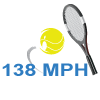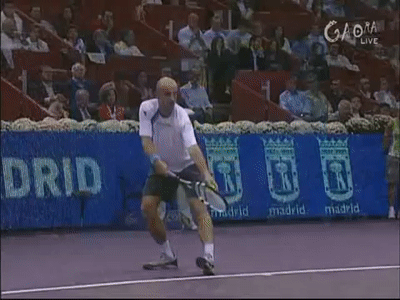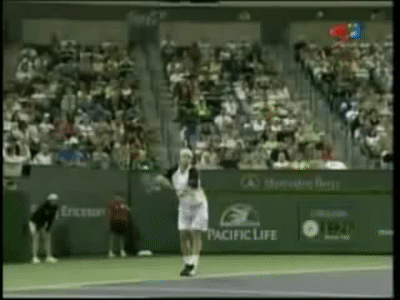Experimenting with the Serve Take Back
So, today I tried to change up my serve by lengthening the take back to the traditional long, pendulum like action which players like Roger Federer and Serena Williams use.
The traditional take back was what I learned when I was younger, and it gave me great results. However, when I injured my shoulder due to a messy arm slip while doing a push up I was advised to change my swing to the more modern abbreviated motion. That was my rehab serve. But personally I’ve always felt that it never matched up to the traditional motion that I learned when I was younger.
These are the pros and cons that I feel come along with each motion:
Traditional, Full Take Back
Pros: It creates momentum. What is momentum? It’s mass into acceleration. The longer motion allows for more time for the mass of the racquet to accelerate. This creates the force needed for faster racquet motion upwards into the ball while serving. The extra ‘push’ or force that the player needs to exert to propel the racquet upwards to hit the ball is decreased by the momentum in the take back, creating a more natural and flowing action.
Cons: It’s easy to loose control of the racquet, and have variations in the position of the racquet before you reach trophy position. A longer swing gives more chances for there to be some mistake or some inconsistency in the take back, which can cause errors in serves. There’s also an issue with timing. While some people might find it easier to time their toss with the longer take back of the racquet, some might find it difficult. It ultimately boils down to what the player feels suits them better.
Abbreviated Take Back
Pros: An abbreviated motion leads to a compact swing, with less room for error and mishap. It leads to a more consistent take back motion, and it takes less time for the player to reach trophy position. It also results in more control on the racquet at trophy position. The player will find it easier to prevent the elbow from bending to much or the racquet from dangling downwards, until they have to push up with the shoulder into the serve. It may also be easier for the player to time their toss with the abbreviated motion, creating a synchronized motion, which is key for the proper functioning of the kinetic chain, which leads to power.
Cons: Less momentum. You will have to defy inertia. For this type of take back, either it comes naturally, like Andy Roddick, or the player is able to defy gravity with the acquisition of muscle. Of course, it was tougher for me to change my action because I had grown up learning the traditional swing, and it had worked well for me. It might be easier for beginners to get a hang of the abbreviated motion.
Today, I went back to the traditional long motion, and I felt more ‘at home’ with the motion. I also saw a dramatic increase in my power. I will be sticking to the change for a few more days, to see how things work out.
My final word of advice would be to not change your service take back, unless you feel that you are experiencing timing problems with the toss, or other technical difficulties even after months or years repetition. Service is a tricky thing, and depends a lot on each players individual feel of the motion. Experiment, find what’s working best for you, and then stick to it!




well noted ….